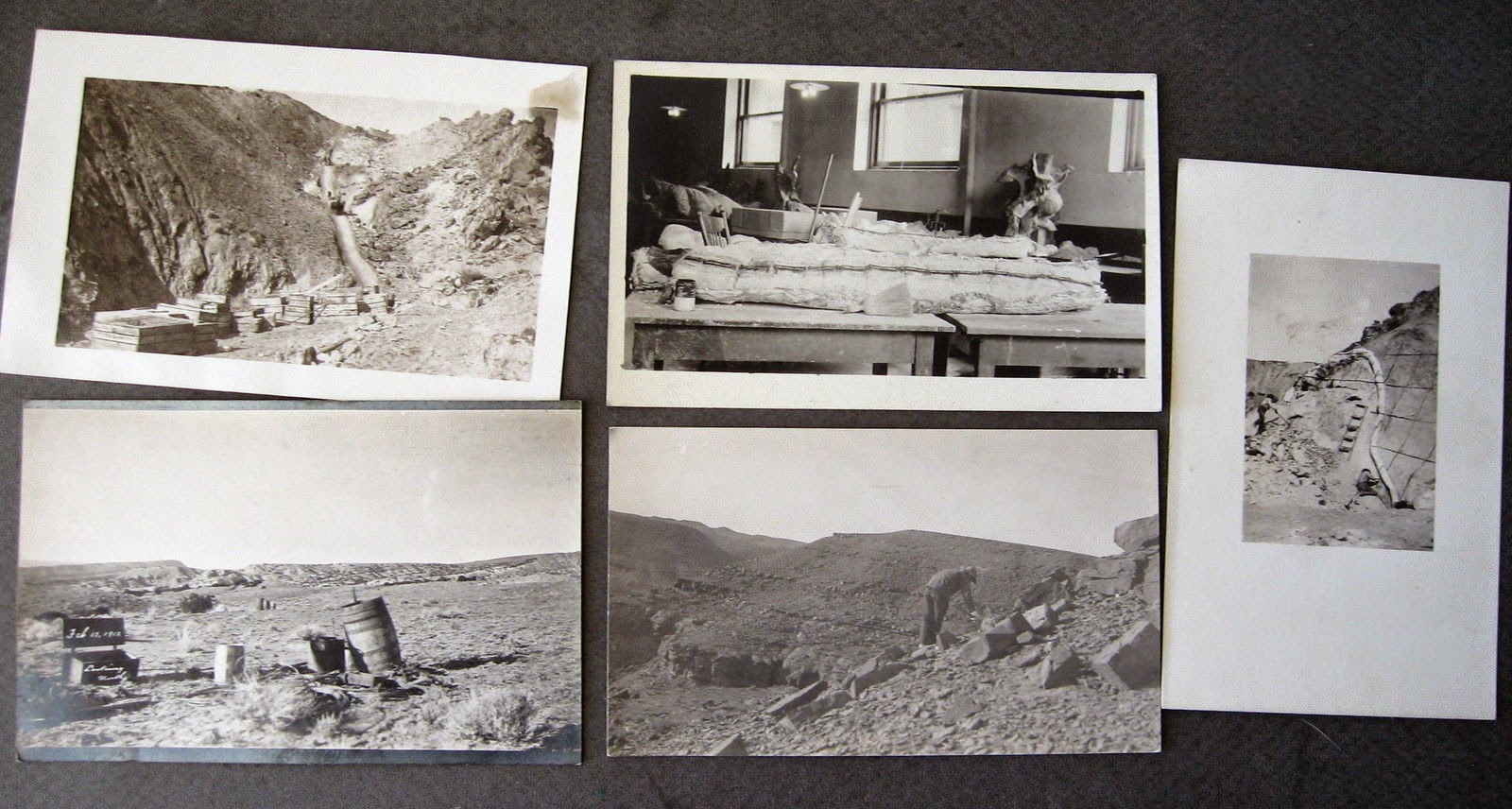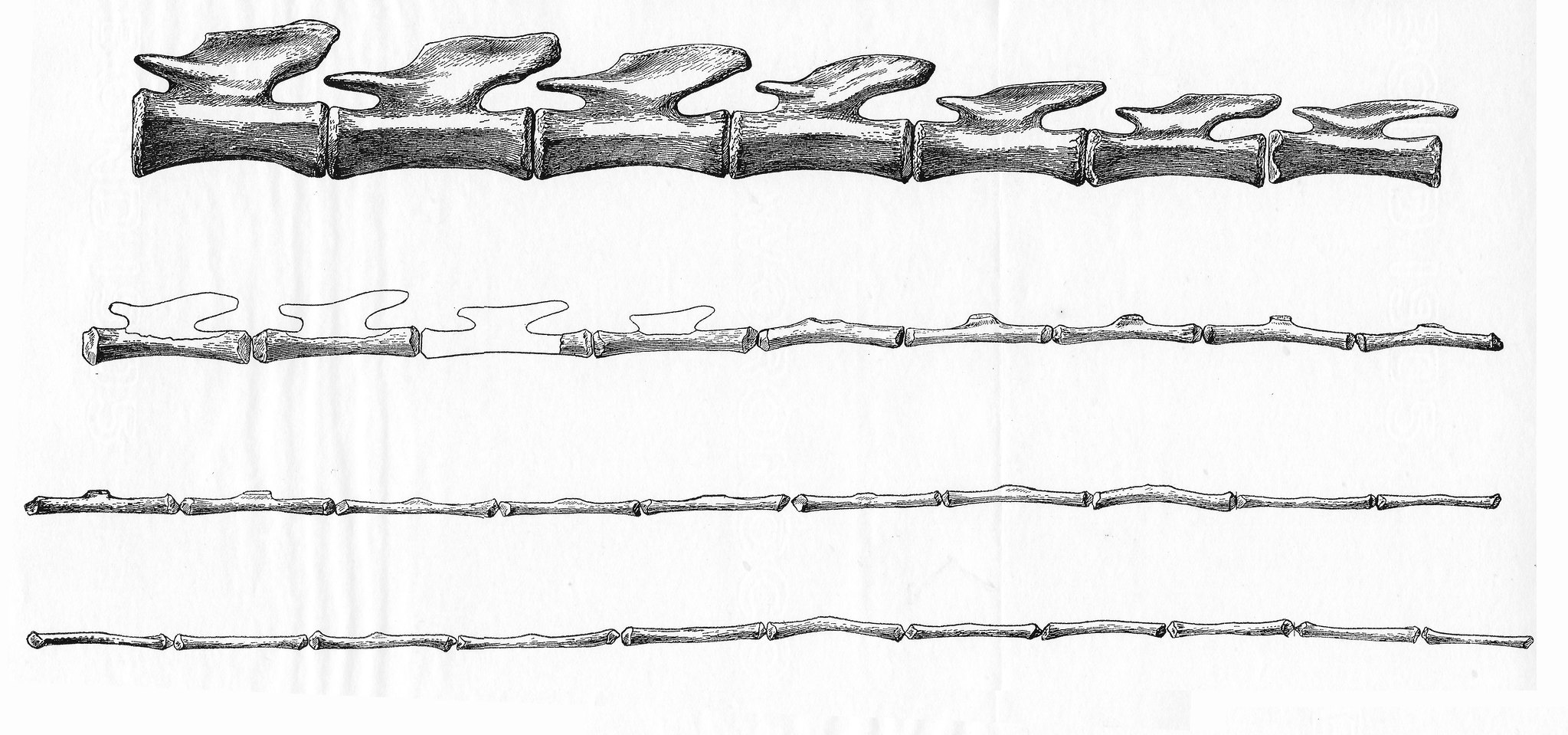These five Real Photo Postcards (RPPCs) recently sold on Ebay (I didn't bid on them). I had not seen any of these images before, so maybe they are each truly one-of-a-kind RPPCs; if this is the case then they may be unique records of collecting during this era.
Fortunately, the seller included high-resolution photos of the cards, which depict some intriguing details. Here is the full set, and a view of the reverse sides (see later for closeups):
 |
| The set of recently sold RPPCs: mass produced or unique amateur photographs? (image from Ebay) |
 |
| Reverse side. The writing reads "Hunting for bones of ancient Mammals in the Uinta Deposits" (sic). (image from Ebay) |
Unique images?
You might remember from my previous blog post that earlier this year I purchased some RPPCs showing early 20th century dinosaur excavations in the Morrison Formation. I was excited as many RPPCs are unique, created by amateur photographers using a special Kodak camera with which you could print your own photos as postcards. However, I concluded that my postcards were not unique as they had text added to the front, making them look semi-professional at least, and I had found another example of one RPPC for sale elsewhere. My cards were from c.1903-30, and quite rare, but they were part of a larger print run. Darn.I am not so sure that all of the cards in this new set were similarly mass-produced. The bottom left and bottom centre RPPCs are full-frame prints, and the bottom left RPPC has some handwritten text added to a dark area of the image. I suspect that these two might be part of a larger print run. However, the three photos with white borders are poorly framed, differing sizes, and one is slightly out of focus. Not very professional. These are also the more interesting cards.
Let's take a closer look.
 |
| PC1. A view of outcrop, presumably where the photographer was searching for fossils. Full-frame RPPC, (image cropped from Ebay photo) |
PC1
The first image shows some badlands in the distance, and some barrels (maybe field equipment, or watering for cows). It's pretty unexciting stuff, but it contains the handwritten caption "Feb 13, 1912 Looking North", providing us with an age consistent with the time when RPPCs were available (1903-30), and when there were significant excavations in the Morrison Formation, and surrounding areas. |
| PC2. Pack mules moving boxes of fossils? White-border RPPC, (image cropped from Ebay photo) |
PC2
This second photo depicts a series of boxes at the end of a trail. In the distance, some animals (pack mules?) can be seen moving toward the boxes. There are not many other clues in this image to inform us of what is going on, unless someone recognizes the trail. Are there fossils in those boxes? |
| PC3. A man searching among blocks of sandstone exposed in some badlands. Full-frame RPPC, (image cropped from Ebay photo) |
PC3
This RPPC shows a man investigating what appears to be blocks of sandstone exposed in badlands topography. If the Ebay seller arranged the postcard reverse sides the same as the front (see above photos), then this is the card that has "Hunting for bones of ancient Mammals in the Uinta Deposits" (sic) written on the reverse. Were the fossil hunters looking for ancient mammals? There are certainly many large extinct mammals known from the Uinta basin and Uinta mountains of Utah, including the bizarre-looking Uintatherium: an enormous herbivorous mammal that lived during the Eocene (~45-50 Mya), and whose remains are well-known from the Bridger and Wakashie Formations of Wyoming and Utah. |
| The dinoceratan mammal, Uintatherium. Is the man photographed in PC3 looking for remains of giant Eocene mammals? (image from Wikipedia, originally from Scott, 1913) |
It's possible that the field crew were in the Uinta deposits searching for a range of different fossils, so maybe they really were looking for mammals. I am not familiar with the Eocene exposures in this area, so I cannot say whether or not the outcrop patterns of the cliffs look Eocene, or whether they look more like the much older Jurassic Morrison Formation (~150 Mya). However, the following photos definitely look Morrison to me.
 | |
| PC4. Two men digging into a steeply inclined cliff with what is probably a long plaster jacket. White-border RPPC, (original blurred image cropped from Ebay seller image) |
 |
| PC5. Is this a photo of the jackets from PC4? |
 | ||
| Vertebrae from the end of a Diplodocus tail,as figured in Holland, 1906; The vertebrae in the jacket in PC5 look almost identical to the lower two rows. |
 |
| The tail of Diplodocus had a long thin whiplash-like end. (image source: Columbia.edu) |
Are these postcards unique images of an important fossil expedition? The nature of RPPCs makes this a possibility, but I do not know. However, there cannot be many historically collected diplodocid tails, so perhaps someone with better knowledge of the subject can shed some light on this little mystery. Either way, I enjoy seeing these old-timer field photos. I hope you do too!

I'm wondering if the pics all originate from the Uintah Basin area of northeastern Utah. The pics with the inclined strata look like the Morrison of the Carnegie Quarry, and I think the time frame is right for the initial work there. The pics with the near horizontal strata look like the Eocene Uintah Formation that occurs south of Vernal, which is a fining upward formation with sandstones that grade into more prevalent fine overbanks. Pic 1 looks like the upper Uintah Formation and pic 3 looks like the lower to mid Uintah Formation. There are lots of Eocene mammals in those rocks. This comes from a few years of paleo consulting out there.
ReplyDelete